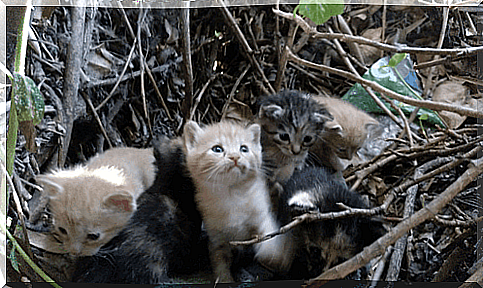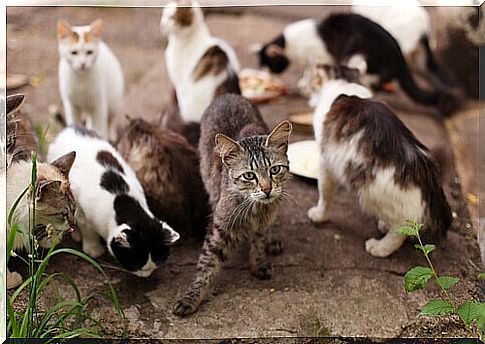CES Project: Capture, Sterilize, Release

In some Spanish cities they are starting to give life to the CES project, organized by institutions, or maintained by protective associations or private individuals.
The acronyms of the CES project correspond to the words “Capture, Sterilization, Release”, and refer to stray cat colonies. By that name, it seems that it is about catching all the stray cats to sterilize them, but the goals of such a project go much further.
All over the world, cities are full of stray cats, which fall ill without anyone helping them, and which breed out of control. The cats come into heat constantly, but it’s mainly when spring comes that hundreds of stray kittens begin to be born.
Few adapt to life on the streets, many of them die in their first few months of life. And even if they reach adulthood, the life expectancy of a stray cat is no more than 5 years. A feline that has a home can live up to 15 years.
CES projects
The only method that has been proven to decrease stray litters, and the size of stray cat populations, is the CES method: capture, neuter and release. Volunteers who live in each city are responsible for catching the cats, sterilizing them and returning all the cats to their colonies.

But the CES project is not only motivated to sterilize the cats: in addition, the colonies are controlled.
Volunteers are assigned colonies that they must watch over and care for. They are in charge of providing food and water, offering veterinary care when necessary, deworming, and looking for families to adopt the puppies that were born there, and also the abandoned cats that end up in the colonies.
CES Project Advantages
Taking care of and controlling a colony takes time and money. But still, there are many advantages:
- The birth rate and the size of homeless populations are decreasing.
- Feed only, avoiding insect pests and dirt.
- There is a control and identification of the cats that live in each colony. They implant a chip and identify the animal as a stray cat, to prevent them from ending up being executed.
- By spaying cats, fights over territoriality or heat are eliminated.
- The health of the area is improved, as the territorial urine markings disappear.
How to know if there are colonies in a certain city?
Controlled colonies are usually marked with informational posters. If a colony is under control, these cats don’t need more help, just reassurance.
If there are no informational posters, it is also possible to know if a stray cat has been spayed (and therefore passed through a CES). He has a notch in one ear.
It is common practice around the world to know if a feline is spayed, and so it will not be captured. This ear notch will be made by the veterinarian shortly after sterilization, while the animal is still anesthetized. It’s painless, and because it’s done on cartilage, it doesn’t need extra care and heals on its own in a few hours.
That way, if anyone sees a cat in one of the cities served by the project with notched ears, they’ll know that there’s someone in charge to take care of it.
How to act in front of a controlled colony
Cats in a controlled colony usually need nothing more than reassurance. These are animals that, for the most part, would not adapt to family life inside a house. Usually, they don’t want much contact with humans.

They are cats that live happily on the streets. As your colony is controlled, we know that there is someone feeding them regularly and monitoring their health.
If someone wants to help the cat colonies in your city, the best thing to do is to put up informational posters. These should contain the names or contacts of the organizations that feed these cats. Someone willing to help can contact them and offer help. More volunteers, feed and money are always needed.
But if there are no controlled colonies, it is possible to help stray animals by starting to control a colony. This is just about putting in feed and not human food scraps, and protecting the food to prevent it from spoiling or anyone else poisoning it.
Stray cats hunt animals and avoid pests. They also keep rats away, and they should teach us to respect the lives that live with us in the cities. Controlled colonies are the most respectful and humane way to protect them and ensure peaceful coexistence.
Main image source: CES Aragón Project









